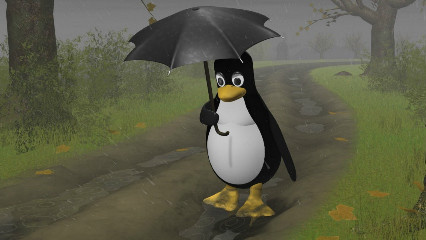
当前课程知识点:微积分1(Calculus I) > Chapter 3 Applications of the Derivative > Local Extrema and Extrema on Open Intervals > Local Extrema and Extrema on Open Intervals
返回《微积分1(Calculus I)》慕课在线视频课程列表
Today we study the Calculus (I)
The topic is
Local Extrema and Extrema on Open Intervals
We have studied
global maximum values on the given domain
What is our global maximum
Means the highest marks in your school
What means local
means local maximum value
or relative maximum value
How to get it
So now look at
for example
what is the local maximum value in the following figure
Look at the figure
Yes
y equals f(x)
changeable
Who can tell me
what are our local maximum value
or minimum value
Get it x1 minimum
corresponding x2 maximum
x4
x5
these two points are our
corresponding maximum or minimum values
We can find
in the special points
the corresponding tangent line equals what
It is a horizontal line
means the corresponding slopes are 0's
How to get it
So now look at the special point
may be here
Look at the definition of local extrema
Let S
the domain of function f
contain the point c
Case 1
f(c) is a local maximum value of f
if there is an interval from a to b
It is our open interval
Containing c such that
f(c) is the maximum value of f
on the intersection interval from a to b
intersection the given domain S
means local maximum value
Similarly meaning
f(c) is our local minimum value of f
if there is an interval a, b
containing c such that
f(c) is the minimum value on the interval a, b
intersection domain S
local minimum value
f(c) is local extreme value of f
if it is either a local maximum
or a local minimum
means our local extreme value
Try to understand
means global maximum value means
the highest marks in your school
Local means the highest marks market in your class
So now look at Theorem of Local Extrema
The First Derivative Test
look at the theorem
Name First Derivative
means using the first derivative signs
Let f be continuous on an open interval (a, b)
that contains a critical point c
If f prime x larger than 0
for all x in (a, c)
corresponding f prime x less than 0
for all x in (c, b)
and then
f(c) is a local maximum value of f
After that we can see Figure 1
Now look at case 2
f prime x less than 0 for all x in (a, c)
and f prime x larger than 0 for all x in (c, b)
and then f(c) is a local minimum value
This means f prime less than 0
and then larger than 0
At this time
it is our local minimum value
f prime x has the same signs
means both are positive
or both are negative
on both sides of c
and then
f(c) is not a local extreme value of f
Pay attention to the key words
larger than 0
less than 0
or less than 0
larger than 0
At this time
it is our local extrema
Otherwise have the same signs
may be positive
may be negative
At this time
it is not our local extreme value
So now look at the figure
From a, c
positive
from c, b
negative
At this time
it is our local maximum value
Corresponding look at Figure 2
from a, c
negative sign
from c, b
positive sign
At this time
it is our local minimum
a local extreme value
Otherwise
have the same signs
positive sign
it is not a local extreme value
Negative sign
negative sign
not a local extreme value
means not a local extreme value
Why
Because they have the same signs
may be positive sign
may be negative sign
At this time
not a local extreme value
Why These two
positive means increasing
decreasing
maximum
Decreasing
increasing
minimum value
So now look at Theorem of Local Extrema
The Second Derivative Test
Look at the name
second derivative
means using double prime
So our condition means
let f prime and double prime exist
means the first derivative and the second derivative exist
at every point
in an open interval (a, b) containing point c
and suppose that
f prime c equals 0
Pay attention to the given condition
f prime c equals 0
means c is our stationary point
At this time
we will consider the double prime
How to determine the local extrema
If Case 1
f double prime c less than 0
and then f(c) is a local maximum value
Pay attention to
less than 0
and then
maximum value
Case 2
if f double prime larger than 0
at this time
f(c) is a local minimum value
larger than 0 minimum value
Try to understand the theorem
Pay attention to the given condition
f prime c equals 0
And the condition c is our stationary point
and then
according to the signs of double prime
determine
which value is our local maximum
or minimum values
o how to remember
It is a theorem
need us to prove
So now we prove the case 1
Case 1
the condition means
f double prime c less than 0
What means double prime
The second derivative
how to get
From the first
f double prime c equals
the limit f prime x minus f prime c
over x minus c
It is our the definition of limit
Write it f prime c
Why
The given condition
our stationary point
so minus 0 over x minus c
Given condition less than 0
Less than 0
if x doesn't equal c means
corresponding this expression less than 0
Why
According to the meaning of limit
we can get
f prime x time x minus c
The product of the two terms less than 0
We can get
if x less than c
less than c means
x minus c less than 0
At this time
f prime larger than 0
Corresponding
x larger than c
f prime less than 0
So
from a to c positive
c to b negative
This time it is our f(c)
is a local maximum value
In the similar way
try to do
prove the case 2
So work by yourself
Try to prove case 2
Using our theorems
to finish our examples
Now look at Example 1
If f(x) equals
x plus 1 cube time x minus 1 2 over three
Use the first Derivative Test
to identify the local extrema
What is our the First Derivative Test
Yes
f the first prime
Get the corresponding signs
What are signs
The signs between a and c
and then c and b
According to the signs
determine it is our local
or not local extrema
So the first
we should do the f prime
f prime x equals 3 time
bracket x plus 1 square
time something plus another prime
It is our the first derivative
How to do
Yes
get the corresponding common factor
It is our common factor
taken out
Together we can get another expression
Pay attention to
this expression
How to get
the corresponding f prime equals 0
or does not exist
Look at the stationary point
means
this term equals 0
This term equals 0
We can get
the point x equals minus 1
or x equals 7 over 11
And then
this term
pay attention to this term equals 0
We can get our singular poin
Singular point means x equals 1
Together
1 2 3
three points
So we can get
three points
Get the corresponding table
Remember stationary points
and singular points
And from f prime
we can get
the corresponding table
1 2 3
three points
The original domain is divided by 4 intervals
So we can get x
ok
minus infinity to minus 1
minus 1 is our special point
means stationary point
Minus 1 to 7 over 11
7 over 11 is another stationary point
And then
7 over 11 to 1
1 is our singular point
from 1 to positive infinity
So 1, 2, 3, three points
Our original domain is divided by
1 2 3 4
four intervals
So now look at
the corresponding f prime signs
According to this expression
x between this interval
f prime
corresponding positive
This point 0
Corresponding positive 0
Minus means negative
Not exist
Larger than 0 at this time positive
How to determine
Yes
consider the signs of the stationary points
or singular points
This is increasing
This is increasing
So the point is not local extrema
Increasing
increasing means the same signs
Together
increasing
decreasing
means the point is our maximum
means local maximum value
Positive means increasing
decreasing function
increasing function
so local minimum
We can get our conclusion
f at the point 7 over 11
close to 2 point 2
is a local maximum value
Corresponding
f(1) equals 0 is a local minimum value
Try to understand the example
Four steps
the first step get f prime
The second step
try to get the special point
Step 3
making up the table
consider the special points
Step 4
we will determine
the point is our local maximum
or minimum points
So now look at Example 2
If f(x) is given
1 over 3 x cube minus x square minus 3 x plus 4
Use the Second Derivative Test
to identify the local extrema
Do you remember the Second Derivative Test
Yes
according to the sign of the double prime
But do you remember the given condition
And the condition
f prime c equals 0
means c is our stationary point
So now look at f prime x
f is given
We can get
f prime x equals x square minus double x minus 3
We can get this formula
x plus 1 time x minus 3
f prime equals 0
We can get
two stationary points
One is minus 1
another is 3
f double prime
what to do
Yes
from here
The first time derivative
the second derivative
means derivative again
Prime again
double x minus 2
We should determine the signs of f double prime
At what points
At the stationary points
means minus 1 and 3
So determine the sign of
double prime at minus 1
equals minus 4
minus 4 less than 0
Do you remember
less than 0 means local maximum
So f minus 1
is a local maximum value
less than 0
Similar meaning
We will determine
the sign of double prime at the point 3
f double prime at 3 equals 4
4 is larger than 0
So f(3) is a local minimum value
Try to understand
according to our stationary point minus 1 and 3
and the signs of double prime
determine local maximum
or local minimum values
Now look at Example 3
Try to find the local extrema value
as to this expression
f(x) equals x square minus 6 x plus 5
on the given interval
the real number system
How to write it
Yes the first
we should get the first derivative
f prime x equals double x minus 6
2 is our common factor taken out
equals 2 time bracket x minus 3
f prime x equals 0
We can get x equals 3
prime 3 equals 0
3 is our stationary point
determine the sign of f double prime
Look at this
f double prime x from here equals 2
This means at every point
corresponding f the second derivative
always equal 2
means always is a positive number
So f double prime at every point
of course
at 3 point equals 2 larger than 0
Why we select the point 3
Not 30
Not 300
Because 3 is our stationary point
We should consider the sign of
double prime at point 3
Larger than 0 this means
f(3) is our local minimum value
So our conclusion is
f(3) is a local minimum value
Remember local minimum value
So we can get
the following summary
The First Derivative Test
f prime larger than 0
and then
f prime less than 0
between the different intervals
And then f(c) is maximum value
Corresponding
less than 0 and larger than 0
means local minimum value
Together
if f prime has the same signs
all positive or all negative
At this time
f(c) is not a local extreme value
Summary 2
try to remember
the Second Derivative Test
f the first prime
f double prime
exist at every point
in an open interval (a, b)
The (a, b) containing the point c
and suppose that means
and the condition f prime c equals 0
Try to understand
f prime c equals 0
means c is our stationary point
Case 1
f double prime less than 0
corresponding local maximum value
f double prime is larger than 0
it is local minimum value
So try to remember less than 0
maximum value
larger than 0
minimum value
According to our summary
try to finish the question
Try to find the local extrema value as to f(x)
It is a polynomial
equals x cube plus 3 x square minus 24 x minus 20
How to do
Yes
find the first derivative
Look at f the first prime
equals 3 x square plus 6 x minus 24
Get the points ok
what points
Write it this
equals 3 time x plus 4 time x minus 2
If we let f prime x equals 0
Try to get
the corresponding points means
obtain the stationary points
How many points
Two points
one is minus 4
the other is positive 2
We found it
the two stationary points
And then
determine the signs
corresponding stationary points
the double prime
f double prime from this
6 x plus 6
We can determine
f double prime at the first stationary point
minus 4 equals minus 18 less than 0
Less than 0 remember
Yes
so the corresponding local maximum value
is f minus 4
The value is 60
Corresponding
determine f double prime
at another stationary point 2
determine the sign
equals positive 18 larger than 0
At this time
the local minimum value f(2) equals
minus 48
Remember larger than 0
minimum
less than 0
maximum
So the class is over
See you next time
-Course Introduction
--Document
-Introduction to Limits
-Rigorous Study of Limits
--Document:Rigorous Study of Limits
-Limit Theorems
-Limits Involving Trigonometric Functions
--Limits Involving Trigonometric Function
--Document:Limits Involving Trigonometric Function
-Limits at Infinity, Infinite Limits
--Limits at Infinity, Infinite Limits
--Document:Limits at Infinity; Infinite Limits
-Continuity of Functions
--Document:Continuity of Functions
-Chapter Review
--Document: chapter 1 supplement
-Assignments for Chapter 1
--Assignment 1
--Assignment 2
-Discussion Topics of Chapter 1
--Discussion Topics of Chapter 1
-Homework and Answer of Chapter 1
-Homework 1
--Homework 1
-Two Problems with One Theme
-The Derivative
-Rules for Finding Derivatives
--Rules for Finding Derivatives
--Document: Rules for Finding Derivatives
--Supplement: Rulesfor Finding Derivatives
-Derivate of Trigonometric Functions
--Supplement: Derivatives of Trigonometric Functions
-The Chain Rule
-Higher-Order Derivative
--Document: Higher-Order Derivatives
--Supplement: Higher-Order Derivatives
-Implicit Differentiation
--Document: Implicit Differentiation
--Supplement: Implicit Differentiation
-Related Rates
-Differentials and Approximations
--Supplement: Differentials and Approximations
-Chapter Review
-Assignments for Chapter 2
--Assignment 1
--Assignment 2
-Discussion Topics of Chapter 2
--Discussion Topics of Chapter 2
-Homework and Answer of Chapter 2
-Homework 2
--Homework 2
-Maxima and Minima
--Supplement:Maxima and Minima
-Monotonicity and Concavity
--Document: Monotonicity and Concavity
--Supplement: Monotonicity and Concavity
-Local Extrema and Extrema on Open Intervals
--Local Extrema and Extrema on Open Intervals
--Document: Local Extrema and Extrema on Open Intervals
--Supplement: Local Extrema and Extrema on Open Intervals
-Practical Problems
--Document: Practical Problems
--Supplement: Practical Problems
-Graphing Functions Using Calculus
-The Mean Value Theorem for Derivatives
--The Mean Value Theorem for Derivatives
--Document: The Mean Value Therorem for Derivatives
--Supplement:The Mean Value Therorem for Derivatives
-Solving Equations Numerically
-Anti-derivatives
-Introduction to Differential Equations
-Chapter Review
--Supplement: Supplement for Chapter 3
-Assignments for Chapter 3
--Assignment 1
--Assignment 2
-Discussion Topics of Chapter 3
--Discussion Topics of Chapter 3
-Homework and Answer of Chapter 3
-Test 1
--Test 1
-Introduction to Area
--Supplement: Introduction to Area
-The Definite Integral
--Document: The Definite Integral
--Supplement: The Definite Integral
-The First Fundamental Theorem of Calculus
--The First Fundamental Theorem of Calculus
--Document: The First Fundamental Theorem of Calculus
--Supplement: The First Fundamental Theorem of Calculus
-The Second Fundamental Theorem of Calculus and the Method of Substitution
--The Second Fundamental Theorem of Calculus and the Method of Substitution
--Document: The Second Fundamental Theorem of Calculus and the Method of Substitution
--Supplement: The Second Fundamental Theorem of Calculus and the Method of Substitution
-The Mean Value Theorem for Integrals and the Use of Symmetry
--Supplement: The Mean Value Theorem for Integrals and the Use of Symmetry
-Numerical Integration
-Chapter Review
-Assignments for Chapter 4
--Assignment 1
--Assignment 2
-Discussion Topics of Chapter 4
--Discussion Topics of Chapter 4
-Homework and Answer of Chapter 4
-Homework 4
--Homework 4
-The Area of a plane region
--Document: The Area of a Plane Region
-Volumes of Solids: Slabs, Disks
--Volumes of Solids: Slabs, Disks
--Document: Volumes of Solids Disk Method
-Volumes of Solids of Revolution: Shells
--Volumes of Solids of Revolution: Shells
--Document: Volumes of Solids Shell Method
-Length of a plane curve
--Document: Length of a Plane Curve
-Work and Fluid Force
--此章节为自学模块
-Moments and Center of Mass
--此章节为自学模块
-Probability and Random Variables
--此章节为自学模块
-Chapter Review
--此章节为自学模块
-Assignments for Chapter 5
--Assignment 1
--Assignment 2
-Discussion Topics of Chapter 5
--Discussion Topics of Chapter 5
-Homework and Answer of Chapter 5
-Homework 5
--Homework 5
-The Natural Logarithm Function
--此章节为自学模块
-Inverse Functions
--此章节为自学模块
-The Natural Exponential Function
--此章节为自学模块
-General Exponential and Logarithm Function
--此章节为自学模块
-Exponential Growth and Decay
--此章节为自学模块
-First-Order Linear Differential Equations
--此章节为自学模块
-Approximations for Differential Equations
--此章节为自学模块
-The Inverse Trigonometric Functions and Their Derivatives
--此章节为自学模块
-The Hyperbolic Functions and Their Derivatives
--此章节为自学模块
-Chapter Review
--此章节为自学模块
-Basic Integration Rules
--Document: Basic Integration Rules
-Integration by parts
--Document: Integration by Parts
-Some Trigonometric Integrals
--Some Trigonometric Integrals
--Document: Some Trigonometric Integrals
-Rationalizing Substitutions
--Document: Rationalizing Substitutions
-Integration of Rational Functions Using Partial Fraction
--Integration of Rational Functions Using Partial Fraction
--Document: Integration of Rational Functions Using Partial Fractions
-Strategies for Integration
--此章节为自学模块
-Chapter Review
--此章节为自学模块
-Assignments for Chapter 7
--Assignment 1
--Assignment 2
-Discussion Topics of Chapter 7
--Discussion Topics of Chapter 7
-Homework and Answer of Chapter 7
-Homework 7
--Homework 7
-Indeterminate Forms of Type
--此章节为自学模块
-Other Indeterminate Forms
--此章节为自学模块
-Improper Integrals: Infinite Limits of Integration
--Improper Integrals: Infinite Limits of Integration
--"Improper Integrals Infinite Limits of Integration" Document
-Improper Integrals: Infinite Integrands
--Improper Integrals: Infinite Integrands
--"Improper Integrals Infinite Integrands" Document
-Chapter Review
--此章节为自学模块
-Assignments for Chapter 8
--Assignment 1
--Assignment 2
-Discussion Topics of Chapter 8
--Discussion Topics of Chapter 8
-Homework and Answer of Chapter 8
-Test 2
--Test 2




